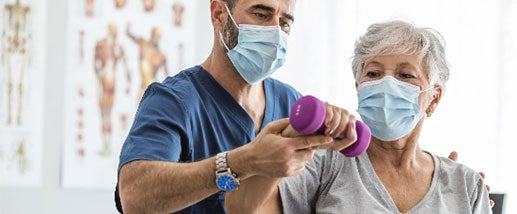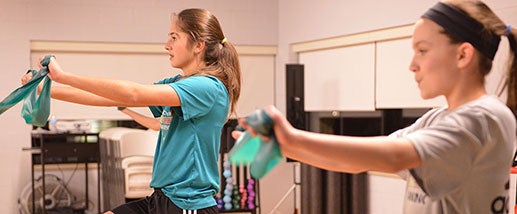AAs and AAAs: Endovascular Treatment for Aneurysms
September 24, 2024
Using a novel, minimally invasive approach, Joshua I. Greenberg MD, RPVI, FSVS, Physician Lead, Vascular Surgery, Trinity Health Medical Group, and Medical Director, Endovascular Services, Trinity Health Grand Rapids and John Morris, DO, Vascular Surgery, Trinity Health Medical Group, worked together to repair a thoracic aortic aneurysm of a 65-year-old male. Drs. Greenberg and Morris are also both members of the Cardiovascular Network of West Michigan.
Thoracic aortic aneurysm (TAA) surgery is a treatment for a bulge (aneurysm) in the part of your aorta that runs through your chest (thoracic aorta). Your aorta is the large artery that carries blood from your heart throughout the rest of your body. It starts at your heart and extends through your chest and abdomen before it ends at your pelvis.
An aneurysm is a ballooning (thinning and enlarging) of the aorta caused by continuous blood pressure against a weakened area of the vessel. Over time an aneurysm may grow, further weakening the wall of the aorta, or it can burst completely causing rupture, which is bleeding inside the body. An aneurysm rupture can be fatal.
Surgery to repair the aneurysm significantly reduces the risk of an aneurysm rupture:
- Open surgery: a large, long incision is made along the side of your chest to remove the damaged portion of the aorta and replace, or graft, it with synthetic material.
- This procedure requires stopping blood flow through the aorta while the graft is being put into place.
- Patients typically stay in the hospital for 5 to 10 days and continue to recover for 4 to 6 weeks at home or an extended care facility.
- Thoracic endovascular aortic repair (TEVAR): a minimally invasive surgery where a thin, flexible tube called a catheter is inserted through an artery in the groin area and up to the aorta. A metal mesh tube called a graft is on the end of the catheter. The graft is placed at the aneurysm site.
- This procedure is less invasive than open surgery.
- Patients typically stay in the hospital for 1 to 2 days and can return to normal activity sometimes within one week.
For this patient, Drs. Greenberg and Morris were able to use TEVAR.
“We placed the graft to repair the diseased portion of the aorta and stent the adjacent subclavian artery using only a small puncture in the groin area and small incision in the left arm,” said Dr. Greenberg.
The patient has only a bandage over the incision area and may experience some mild pain and mild bruising.
What’s Next? TAAAs
Aortic aneurysms that extend through the chest and abdomen are called thoracoabdominal aortic aneurysms (TAAAs).
The visceral branch vessels are important arteries that supply blood to organs, including liver, stomach, spleen, and intestines. These vessels are critical to maintain blood flow for sustained health.
Endovascular stent graft repair has revolutionized the management of abdominal and thoracic aortic aneurysms. But until recently, there have been no FDA approved options for the endovascular treatment of thoracoabdominal aortic aneurysms.
Dr. Greenberg shared that Trinity Health Grand Rapids will now have the first FDA-approved, off-the-shelf, endovascular repair solution for the treatment of these more complex aneurysms.
“For these extensive aneurysms – those that span the chest and belly – we’re now able to treat them with a much more advanced device, said Dr. Greenberg. “This is the biggest innovation in the last 10 years and our Grand Rapids team is one of just a few sites in the state that’s able to offer it.”
This implantable branched device consists of several parts which supply blood to the aorta, visceral branch vessel and lower limbs. It’s considered a less invasive treatment option with potentially lower rates of surgical complications, blood loss and death, as well as shorter hospital stays, and a quicker recover compared to open surgical repair.
Learn more about cardiovascular care at Trinity Health Michigan.




